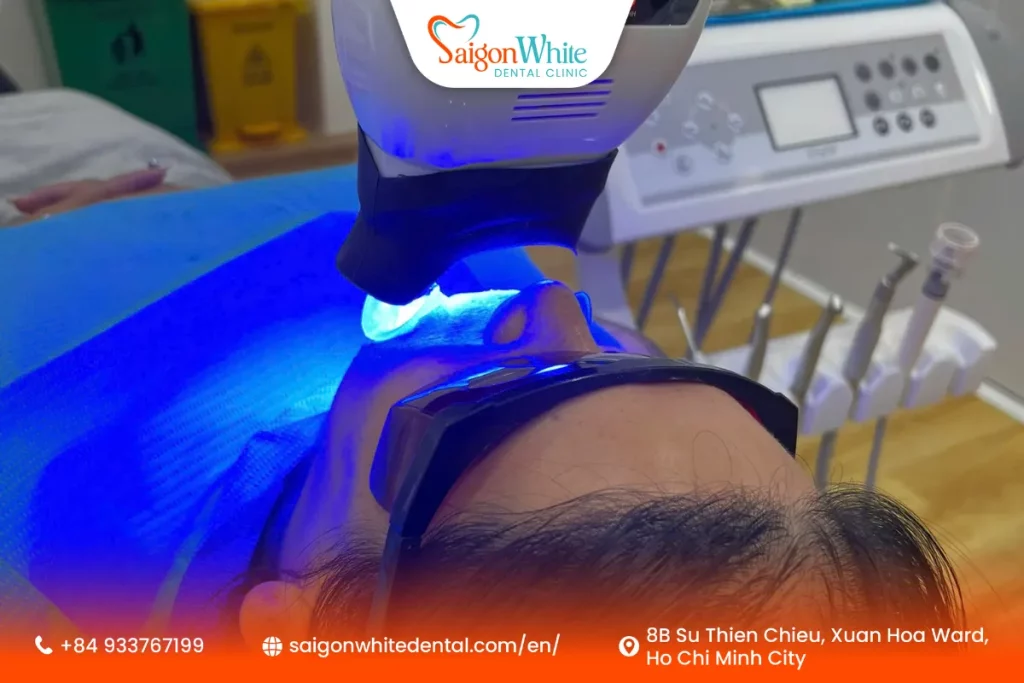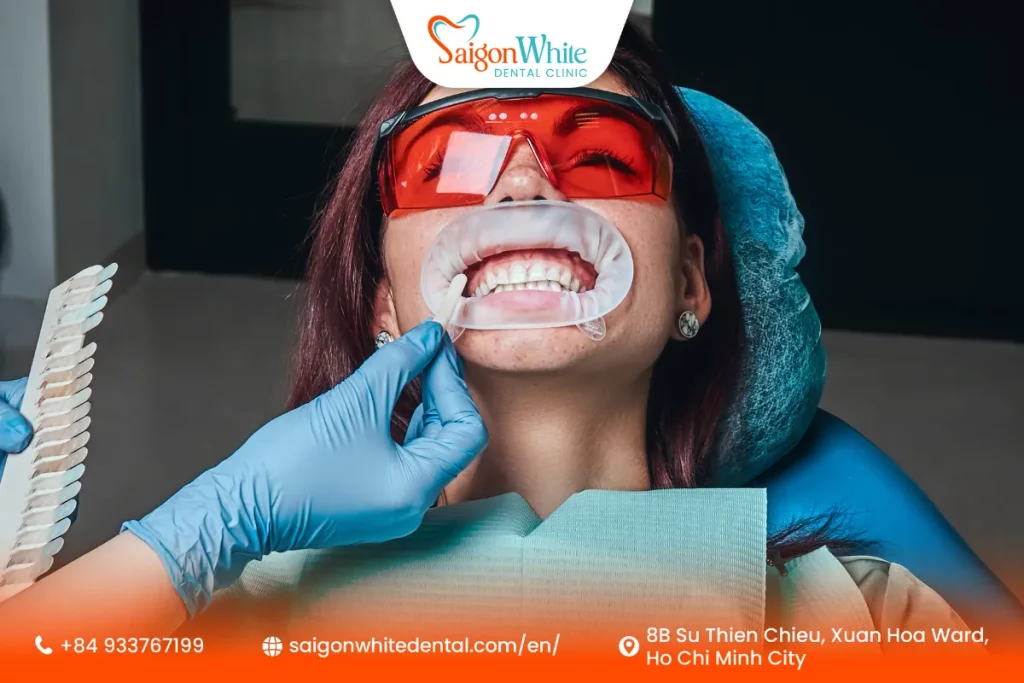A bright, radiant smile is often associated with health, youth, and confidence. As a result, more people than ever are turning to whitening treatments — from over-the-counter strips and gels to professional in-office procedures.
But with this rise in popularity comes a growing concern: Does teeth whitening damage enamel? Understanding how whitening works, what ingredients are involved, and the risks associated with different methods is essential before starting any treatment.
In this article, we’ll explore whether teeth whitening can damage enamel, what the research says, and how to keep your smile both white and healthy.

What Is Tooth Enamel and Why Is It Important?
To understand the potential risks of whitening, it’s essential to first understand what enamel is.
Tooth enamel is the thin, outermost layer of your teeth, and it’s the hardest substance in the human body. This strong shell protects your teeth from everyday damage caused by:
- Chewing and biting
- Exposure to acids from food and bacteria
- Temperature sensitivity (hot and cold foods)
Despite its strength, enamel cannot regenerate. Once it’s worn down or eroded, it’s gone for good. That’s why protecting enamel is crucial for maintaining long-term oral health and preventing issues like sensitivity, cavities, and tooth decay.
How Does Teeth Whitening Work?

Most teeth whitening products use hydrogen peroxide or carbamide peroxide as their active ingredients. These agents penetrate the enamel and break down the compounds that cause staining and discoloration. Here’s a closer look at the types of whitening options:
In-Office Whitening (Professional Bleaching)
- Performed by a dentist
- Uses a high concentration of peroxide (25–40%)
- Often combined with heat or LED light to accelerate the process
- Produces visible results in one visit
Take-Home Whitening Trays
- Provided by dentists with custom-fitted trays
- Uses a moderate peroxide concentration (10–20%)
- Worn for a set time daily over 1–2 weeks
Over-the-Counter Whitening Products
- Whitening strips, gels, pens, and trays
- Lower peroxide concentrations (3–10%)
- Convenient but less controlled and more prone to misuse
Whitening Toothpastes
- Contains mild abrasives and low levels of peroxide
- Removes surface stains only
- Not suitable for deep stains
These products do not remove enamel. Instead, they oxidize the stain molecules within the enamel, making them less visible and giving teeth a whiter appearance.
Can Teeth Whitening Damage Enamel?
Here’s the good news: when used correctly and under professional supervision, teeth whitening is considered safe and does not damage enamel.
According to studies published by the American Dental Association (ADA) and peer-reviewed journals, the bleaching agents used in modern dentistry are safe when used within recommended concentrations and timeframes.
However, improper use or overuse can cause temporary side effects and, in rare cases, contribute to enamel-related issues.
What Whitening Might Do:
- Causes temporary dehydration of the tooth
- Increase sensitivity for a short time
- Irritate gums or soft tissue if the gel touches them
- Lead to uneven whitening if not applied properly
What Whitening Does Not Do:
- It does not thin or strip enamel
- It does not drill, etch, or scrape the tooth surface
- It does not cause cavities or erosion when used correctly
Factors That Affect Whitening Safety
Teeth whitening is a popular cosmetic dental treatment, but not all whitening methods are created equal — and not everyone responds to them the same way. The safety and effectiveness of whitening depend on several key factors.
Understanding these factors can help you make an informed decision and avoid potential side effects such as sensitivity or enamel damage.
Type of Whitening Product Used
There are many types of whitening products, and each comes with different concentrations of active ingredients:
- Professional whitening treatments (performed by a dentist) use controlled, high-concentration agents like hydrogen peroxide or carbamide peroxide, ensuring safety and efficacy.
- Over-the-counter products (strips, gels, pens) often contain lower concentrations but can be misused if instructions are not followed.
- DIY remedies (like baking soda, lemon juice, or charcoal) may be abrasive and harmful to enamel if used improperly.
Dentist-supervised whitening is the safest and most reliable option.
Condition of Your Teeth and Gums
Healthy teeth and gums are essential before undergoing any whitening procedure. Whitening is not recommended if you have:
- Active cavities or tooth decay
- Gum disease or inflammation
- Exposed tooth roots due to gum recession
- Cracked or damaged enamel
These conditions can lead to increased sensitivity or uneven whitening results.
Existing Dental Work
Whitening agents do not affect restorations such as:
- Crowns
- Veneers
- Teeth Fillings
- Bridges
If you have visible restorations, whitening can lead to color mismatches between natural teeth and dental materials. Your dentist may recommend alternative cosmetic solutions, like replacing or adjusting the restorations for a uniform look.
Frequency and Duration of Treatment
Using whitening products too often or for too long can wear down enamel and irritate the gums. Overuse increases the risk of:
- Tooth sensitivity
- Enamel erosion
- Soft tissue burns or irritation
Following professional guidelines and avoiding excessive treatment helps maintain both safety and long-term results.
Concentration of Bleaching Agents
Higher concentrations of whitening gels can produce faster results, but they also increase the risk of side effects. In-clinic whitening treatments are carefully monitored, while at-home products may carry risks if misused.
Always consult a dentist to choose the right strength and method for your needs.
Age and Medical Conditions
Teeth whitening is generally not recommended for:
- Children under 16 (due to increased sensitivity from developing enamel)
- Pregnant or breastfeeding women (due to lack of safety data)
- Individuals with sensitive teeth, acid reflux, or worn enamel
A personalized dental assessment is the best way to determine if whitening is safe for you.
Lifestyle and Oral Habits
Certain lifestyle factors can also impact safety and outcomes:
- Smokers may experience uneven results and quicker relapse
- Heavy coffee, tea, or red wine drinkers may need more frequent touch-ups
- Poor oral hygiene can lead to increased side effects during whitening
Improving oral health habits before whitening helps minimize risks and prolong results.
Signs That Whitening May Be Harming Your Teeth
While whitening typically doesn’t harm enamel, your teeth may react negatively if you’re overusing products or have underlying dental problems. Be aware of:
- Tooth sensitivity that doesn’t subside after 24–48 hours
- White spots or blotches on the enamel surface
- Tingling or zapping pain when drinking hot/cold beverages
- Gum irritation or bleeding during or after treatment
- A chalky, dull appearance on the enamel
If you experience any of the above, stop whitening and consult your dentist immediately.
How to Whiten Teeth Safely Without Damaging Enamel
To protect your enamel and get the best results from whitening, follow these best practices:
Consult Your Dentist First
A dentist can assess your enamel health, identify existing dental issues, and recommend the best whitening method for your situation.
Use Dentist-Approved Products
Always choose whitening systems that are professionally regulated and clinically tested. Avoid using “natural remedies” like lemon juice or baking soda — these are acidic and abrasive, which can damage enamel.
Stick to the Instructions
Whether it’s whitening strips or gel trays, follow usage instructions carefully. Do not exceed the recommended time or frequency.
Strengthen Your Enamel
Use fluoride toothpaste or mouth rinses daily to help remineralize your enamel. Consider products with calcium phosphate or nano-hydroxyapatite for added protection.
Avoid Acidic or Staining Foods After Whitening
After whitening, teeth are temporarily more porous. Avoid:
- Coffee, tea, wine
- Citrus fruits
- Tomato sauces
- Colored sodas
Drink water and wait a few hours before consuming staining items.
Alternatives for People with Weak Enamel or Sensitivity
If you have enamel erosion, receding gums, or extreme sensitivity, whitening may not be ideal. Consider these options:
1. Whitening Toothpaste
Mild abrasives and low peroxide content can gently brighten teeth over time without harsh chemicals.
2. Dental Bonding or Veneers
For deep or intrinsic stains, composite bonding or porcelain veneers may provide a long-lasting cosmetic solution.
3. Professional Cleaning
Sometimes, a professional cleaning can remove enough surface stains to brighten your teeth — especially if caused by plaque or tartar buildup.
Teeth Whitening Myths vs Facts
Let’s clear up some common misconceptions about whitening:
| Myth | Fact |
| Whitening scrapes away enamel | Whitening oxidizes stain molecules, not enamel |
| Baking soda and lemon juice are safer | They are more abrasive and acidic — they damage enamel |
| Natural whitening is always safe | Many “natural” remedies can be harmful or ineffective |
| All tooth sensitivity = enamel damage | Temporary sensitivity is common and reversible |
| Whitening toothpaste works as well as professional whitening | Whitening toothpaste only removes surface stains, not deep discoloration |
Conclusion
So, does teeth whitening damage enamel? The answer is no, not when done correctly and under the guidance of a dental professional.
Modern whitening methods are safe, effective, and enamel-friendly, especially when tailored to your specific dental condition. While some people may experience temporary sensitivity or irritation, these side effects are usually mild and reversible.
The key is moderation, proper technique, and professional oversight. If you’re considering whitening your teeth, consult your dentist to create a plan that’s both safe and successful.
Brighten Your Smile Safely at Saigon White Dental
At Saigon White Dental, we offer clinically approved teeth whitening services using the latest technology that’s gentle on enamel and highly effective.
Whether you want a quick in-office boost or a safe at-home kit, our team will guide you every step of the way.
📍 Located in the heart of Ho Chi Minh City
📞 Book your consultation today

 Telegram
Telegram